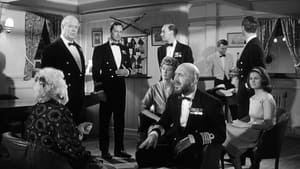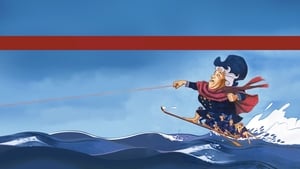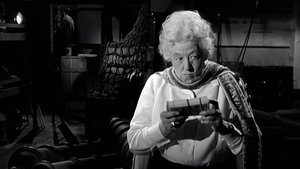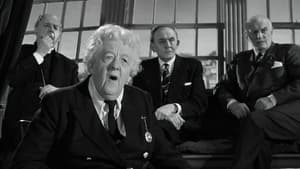Video Sources 0 Views
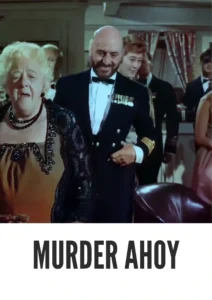
Synopsis

Prepare for a delightful and puzzling adventure with Murder Ahoy, a classic British mystery-comedy from 1964, now beautifully colorized for a viewing experience that’s both charming and thrilling. Directed by George Pollock and featuring the incomparable Margaret Rutherford as Miss Jane Marple, this film blends intrigue, humor, and maritime mayhem aboard a training vessel for young criminals. Perfect for fans of Agatha Christie adaptations and those who enjoy a good whodunit with a dash of wit, this HD download brings a unique and entertaining chapter of Miss Marple’s adventures to your screen.
Murder Ahoy sets sail when Miss Jane Marple becomes a trustee of the Cape of Good Hope Youth Reclamation Centre, an organization aimed at rehabilitating juvenile delinquents aboard the HMS Battledore, a historic sailing ship. However, tranquility quickly turns to treachery when fellow trustee Cecil Ffolly-Hardwicke meets an untimely demise shortly after expressing concerns about something he discovered on the ship.
Determined to uncover the truth, Miss Marple embarks on a voyage aboard the Battledore, much to the dismay of its Captain Rhumstone. As she investigates, a series of suspicious events unfold, including more murders and the discovery of a swindling plot. Miss Marple, with her keen observation skills and unwavering determination, navigates through a cast of colorful characters, including suspicious officers, a charming matron, and a host of young cadets, all while dodging danger at every turn.
The film culminates in a thrilling confrontation where Miss Marple unmasks the culprit and brings them to justice, proving that even on the high seas, crime doesn’t stand a chance against her sharp intellect. Murder Ahoy is a delightful blend of mystery, comedy, and adventure that showcases Margaret Rutherford’s iconic portrayal of Miss Marple.
The film features a stellar cast, each bringing their unique talents to this thrilling mystery:
-
Margaret Rutherford as Miss Jane Marple
-
Lionel Jeffries as Captain Sydney De Courcy Rhumstone
-
Charles Tingwell as Chief Inspector Craddock
-
William Mervyn as Commander Breeze-Connington
-
Joan Benham as Matron Alice Fanbraid
-
Stringer Davis as Mr. Jim Stringer
Murder Ahoy falls squarely into the genre of mystery-comedy, blending the suspenseful elements of a whodunit with lighthearted humor and quirky characters. It is a classic example of British filmmaking, offering a delightful mix of intrigue and amusement.
Released in 1964, Murder Ahoy is one in a series of films featuring Margaret Rutherford as Miss Marple. These films, while not always faithful to Agatha Christie’s original stories, are beloved for Rutherford’s eccentric and endearing portrayal of the iconic detective. Murder Ahoy offers a glimpse into the cinematic landscape of the 1960s, where mystery films often incorporated comedic elements to appeal to a wider audience. This film remains a classic example of the enduring appeal of Agatha Christie’s characters and stories.
This colorized version of Murder Ahoy has been carefully restored using modern digital techniques, enhancing the visual appeal while preserving the film’s original charm and atmosphere. The colorization process involved meticulous attention to detail, ensuring that the colors are both vibrant and appropriate for the period. This painstaking process brings new life to the characters and settings, making the story even more engaging for modern audiences. While the merits of colorizing classic films are sometimes debated, it introduces these films to a broader audience, ensuring their legacy for future generations.
-
: George Pollock
-
: David Pursall, Jack Seddon
-
: Ron Goodwin
-
: Desmond Dickinson
-
: Metro-Goldwyn-Mayer British Studios
-
: 93 minutes
-
: MP4
-
: HD (1080p)
-
: Compatible with most devices, including smartphones, tablets, computers, and smart TVs.
Murder Ahoy (1964) is celebrated for its witty script, charming performances, and delightful blend of mystery and comedy. It remains a beloved classic, cherished for its unique charm and its ability to both entertain and intrigue audiences. As a delightful chapter in Miss Marple’s adventures, Murder Ahoy offers a glimpse into the golden age of British cinema.
-
: What is Murder Ahoy about?
-
A: Murder Ahoy is a mystery-comedy film about Miss Marple investigating a series of murders and a swindling plot aboard a training vessel for young criminals.
-
-
: Is Murder Ahoy (1964) a faithful adaptation of Agatha Christie’s novels?
-
A: While not entirely faithful to the original stories, Murder Ahoy captures the spirit of Agatha Christie’s characters and offers a delightful and entertaining mystery.
-
-
: Is this version of Murder Ahoy colorized?
-
A: Yes, this version has been professionally colorized to enhance the viewing experience.
-
-
: What makes Murder Ahoy interesting for classic film fans?
-
A: Murder Ahoy offers a unique blend of British humor and mystery, showcasing the talents of Margaret Rutherford as Miss Marple.
-
-
: What is the download format?
-
A: The download format is MP4, which is compatible with most devices.
-
-
: What resolution is the download?
-
A: The resolution is HD (1080p), providing a high-quality viewing experience.
-
Watch Murder Ahoy Today!
